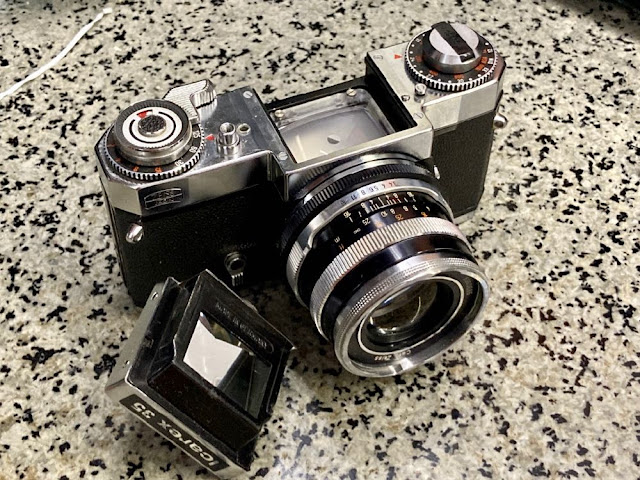Update March 7th 2023
 |
| Icarex 35CS |
This is a quite neat camera from the mid-'60s made by Zeiss Ikon, but the project was originally from Voigländer. Some people say that this camera is not so reliable, but mine is working perfectly except for the light meter (built-in on the CS prism).
It's a bulky and heavy all-mechanical camera with a very good viewfinder. Not exceptionally large, but very, very clear and it has a 45 degree split image focusing aid and a plain matte area.
The body finish is supperb !
The shutter speeds are from 1/2s to 1/1000s and it's very smooth and reliable compared to the Contarex and Contax rangefinder cameras from Zeiss, much more simple and less prone to jams.
The Icarex was sold with finder options: A plain waist-level (like the ones found on TLRs), a simple prism and the dreaded CS prism-meter.
The last one has a so-so CdS light meter very prone to problems. The exposure setting is very awkward. First you need to set the speed on the top dial of the prism assembly and set the same speed on the shutter speed selector. Then you need to step down the lens by pressing the DoF/iris button near the lens mount and adjust the aperture until the light meter needle stays at the center. Not very practical. To make things even stranger the meter needle is at the TOP of the viewfinder area, along with the aperture number. At its top, we can see an exposure guide calculator. It uses a dreaded PX13 (625) mercury battery. Do yourself a favor, forget about it and use a handheld meter.
I prefer it with the simple prism (no meter).
 |
| Icarex 35 |
Note that the Icarex 35 and the 35CS are the same camera. The difference is the detachable prism model.
 |
| Icarex 35 with the standard prism |
At this time I have four lenses:
 |
| Icarex camera lens mount |
 |
| Icarex lens mount |

